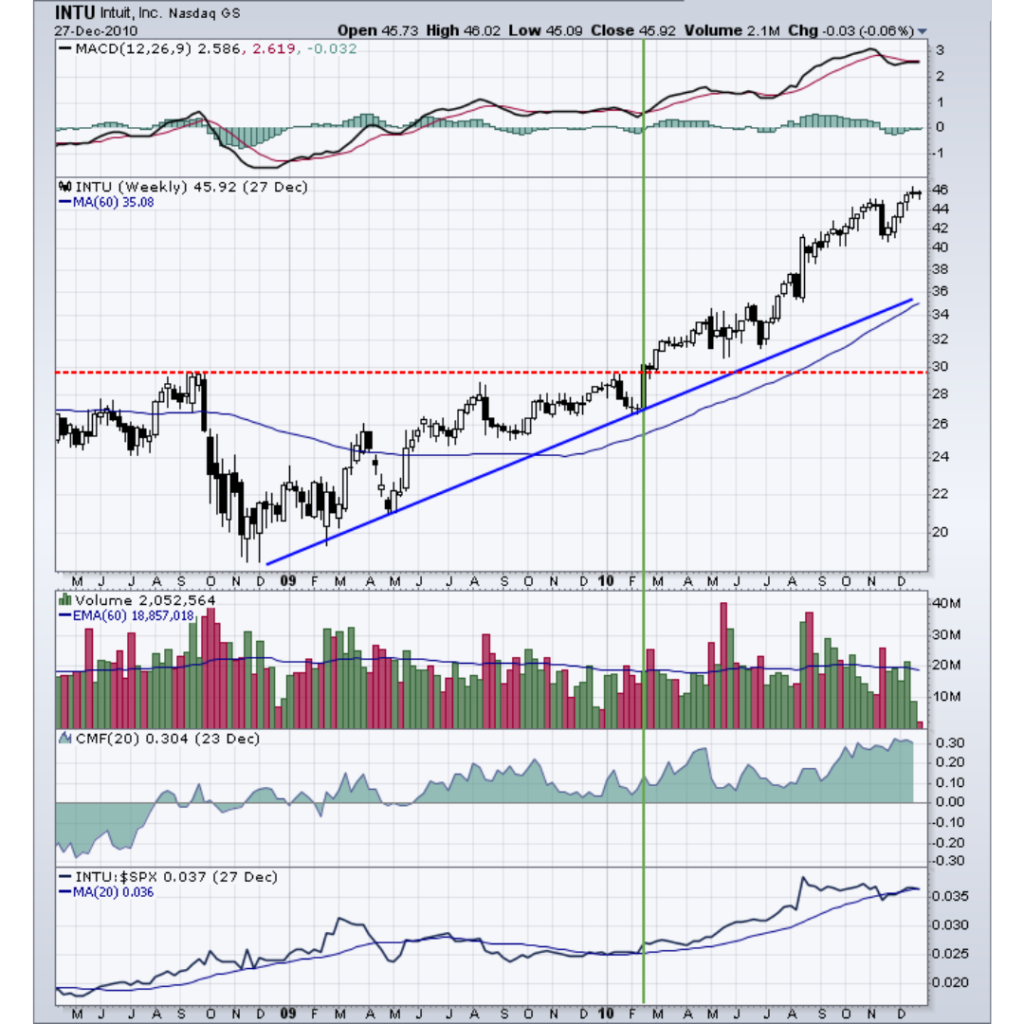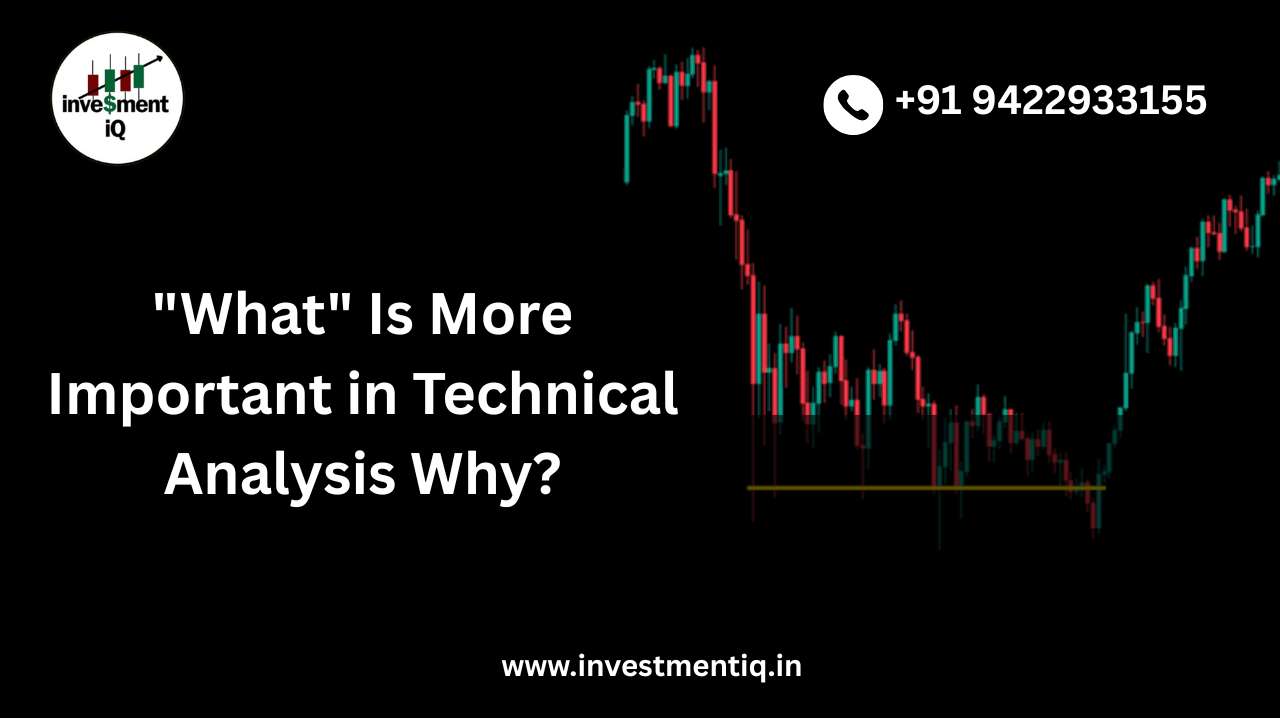“What” Is More Important inTechnical Analysis Than “Why”
- What is the current price?
- What is the history of the price movement?
The price of a security is the end result of the battle between the forces of supply and demand. The objective of the analysis is to forecast the direction of the future price. By focusing on price, technical analysis represents a direct approach. Fundamentalists are concerned with why the price is what it is. For technicians, the why portion of the equation is too broad and many times the fundamental reasons given are highly suspect. Technicians believe it’s best to concentrate on what and never mind why. Why did the price go up? There were simply more buyers (demand) than sellers (supply). After all, the value of any asset is only what someone is willing to pay for it. Who needs to know why?
Technical Analysis: General Steps
Many technicians apply a top-down approach that begins with broad-based market analysis, then narrows down to specific sectors/industries, and ultimately analyzes individual stocks.
The beauty of technical analysis lies in its versatility. Because the principles of technical analysis are universally applicable, each of these levels of analysis can be performed using the same theoretical background. You don’t need an economics degree to analyze a market index chart. You don’t need to be a CPA to analyze a stock chart. Charts are charts. It doesn’t matter if the timeframe is two days or two years. It doesn’t matter whether you’re looking at a stock, market index, or commodity. The technical principles of support, resistance, trend, trading range, and other aspects can be applied to any chart. As simple as this may sound, technical analysis is far from easy. Success requires serious study, dedication, and an open mind.
Chart Analysis Basics
Technical analysis can be complex or straightforward. It depends on how you use it. The example below shows some basic principles of chart analysis. Since you’re probably interested in buying stocks, the focus will be on spotting bullish situations in this chart.

Overall Trend. The first step is to identify the overall trend. You can do this with trend lines, moving averages, or peak/trough analysis. For example, as long as price remains above its upward-sloping trend line or specific moving averages, the trend is up. Similarly, the trend is up as long as higher lows form on pullbacks and higher highs form on advances.
Support. Congestion areas and previous lows below the current price mark the support levels. A break below support would be considered bearish and detrimental to the overall trend.
Resistance. Congestion areas and previous highs above the current price mark resistance levels. A break above resistance would be considered bullish and positive for the overall trend.
Momentum. Momentum is usually measured with an oscillator such as MACD. If MACD is above its 9-day EMA (exponential moving average) or positive, momentum will be considered bullish or at least improving.
Buying/Selling Pressure. For stocks and indices with volume figures available, an indicator that uses volume is used to measure buying or selling pressure. When the Chaikin Money Flow is above zero, buying pressure is dominant. Selling pressure is dominant when it is below zero.
Relative Strength. The price relative is plotted as a line that divides the security by a benchmark. For stocks, the price is usually divided by the S&P 500. The relative strength plot indicates if the stock is outperforming (rising) or underperforming (falling) the major index.
The final step is to synthesize the above analysis to ascertain the following:
- Strength of the current trend.
- Maturity or stage of the current trend.
- Reward-to-risk ratio of a new position.
- Potential entry levels for a new long position.
The example above analyzed the chart for an individual stock, but these techniques can be applied to sectors or broad market indexes.
Top-Down Technical Analysis
Many technicians employ a top-down approach to technical analysis, starting with broad-based macro analysis and ending with a more focused/micro perspective:
- Broad market analysis using major indices such as the S&P 500, Dow Industrials, NASDAQ and NYSE Composite.
- Sector analysis to identify the strongest and weakest groups within the broader market.
- Individual stock analysis to identify the strongest and weakest stocks within select groups.
For each segment (market, sector, and stock), an investor would analyze long-term and short-term charts to find those that meet specific criteria. Analysis will first consider the market in general, perhaps the S&P 500. If the broader market were considered to be in bullish mode, analysis would proceed to a selection of sector charts.
Those sectors that show the most promise would be singled out for individual stock analysis. Once the sector list is narrowed to 3-4 industry groups, individual stock selection can begin.
With a selection of 10-20 stock charts from each industry, a selection of 3-4 of the most promising stocks in each group can be made. How many stocks or industry groups make the final cut will depend on the strictness of the criteria set forth. Under this scenario, we would be left with 9-12 stocks from which to choose. These stocks could even be broken down further to find the 3-4 that are the strongest of the strong.




